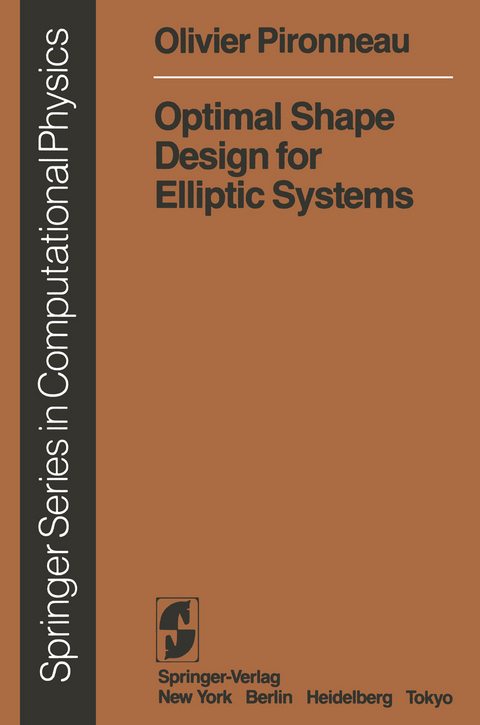
Optimal Shape Design for Elliptic Systems
Springer Berlin (Verlag)
978-3-642-87724-7 (ISBN)
1. Elliptic Partial Differential Equations.- 1.1 Introduction.- 1.2 Green's Formula.- 1.3 Sobolev Spaces.- 1.4 Linear Elliptic PDE of Order 2.- 1.5 Numerical Solutions of Linear Elliptic Equations of Order 2.- 1.6 Other Elliptic Equations.- 1.7 Continuous Dependence on the Boundary.- 2. Problem Statement.- 2.1 Introduction.- 2.2 Definition.- 2.3 Examples.- 2.4 Principles of Solution.- 2.5 Future of Optimal Design Applications in Industry.- 2.6 Historical Background and References.- 3. Existence of Solutions.- 3.1 Introduction.- 3.2 Dirichlet Conditions.- 3.3 Neumann Boundary Conditions.- 3.4 Conclusion.- 4. Optimization Methods.- 4.1 Orientation.- 4.2 Problem Statement.- 4.3 Gradients.- 4.4 Method of Steepest Descent.- 4.5 Newton Method.- 4.6 Conjugate Gradient Method.- 4.7 Optimization with Equality Constraints.- 4.8 Optimization with Inequality Constraints.- 5. Design Problems Solved by Standard Optimal Control Theory.- 5.1 Introduction.- 5.2 Optimization of a Thin Wing.- 5.3 Optimization of an Almost Straight Nozzle.- 5.4 Thickness Optimization Problem.- 6. Optimality Conditions.- 6.1 Introduction.- 6.2 Distributed Observation on a Fixed Domain.- 6.3 Other Cases with Linear PDE.- 7. Discretization with Finite Elements.- 7.1 Introduction.- 7.2 Neumann Problem.- 7.3 Dirichlet Conditions.- 7.4 Other Problems.- 7.5 Convergence.- 8. Other Methods.- 8.1 Introduction.- 8.2 Method of Mappings.- 8.3 Finite Difference Discretization.- 8.4 Method of Characteristic Functions.- 8.5 Discretization by the Boundary Element Method.- 9. Two Industrial Examples.- 9.1 Introduction.- 9.2 Optimization of Electromagnets.- 9.3 Optimization of Airfoils.- 9.4 Conclusion.- References.
| Erscheint lt. Verlag | 4.5.2012 |
|---|---|
| Reihe/Serie | Scientific Computation |
| Zusatzinfo | XII, 168 p. 29 illus. |
| Verlagsort | Berlin |
| Sprache | englisch |
| Maße | 152 x 229 mm |
| Gewicht | 277 g |
| Themenwelt | Mathematik / Informatik ► Mathematik ► Analysis |
| Naturwissenschaften ► Physik / Astronomie ► Mechanik | |
| Naturwissenschaften ► Physik / Astronomie ► Strömungsmechanik | |
| Schlagworte | Boundary element method • Calculus of Variations • Design • differential equation • Diskretisation • Elliptische Differentialgleichung • Fields • Finite Element Method • fluid- and aerodynamics • Konstruktion • numerical method • Optimale Regelung • Optimierung • partial differential equation • Simulation • Solution • System |
| ISBN-10 | 3-642-87724-9 / 3642877249 |
| ISBN-13 | 978-3-642-87724-7 / 9783642877247 |
| Zustand | Neuware |
| Haben Sie eine Frage zum Produkt? |
aus dem Bereich


